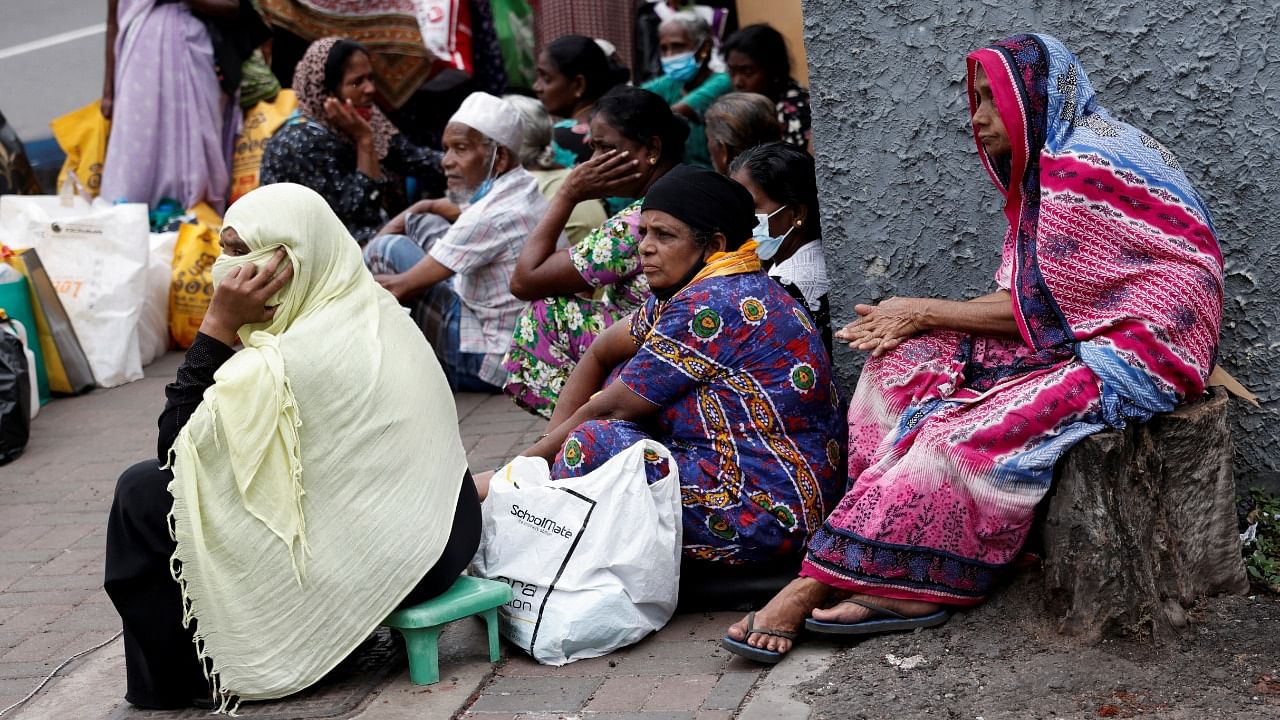
By Ruth Pollard
Sri Lanka has a habit of selling off its assets when times are tough. And it doesn’t get much tougher than this. The tiny island nation is in default and in desperate need of $4 billion to pay for food, fuel and fertiliser to stave off a deeper crisis.
The newly appointed prime minister, Ranil Wickremesinghe — his sixth time in the job — wasted no time in announcing the government would privatise Sri Lankan Airlines, which prior to the pandemic had flown to 126 destinations in more than 60 countries. The carrier struggled with a stretched balance sheet even before Covid-19 and may fail to make payments to aircraft lessors, Bloomberg Intelligence analysts wrote last month. It had lost $125 million in the year through March 2021 and will likely struggle to find a buyer willing to take it on.
But when a country has only one day’s stock of gasoline and not enough dollars to pay for the three ships carrying crude and furnace oil anchored off the coast, selling anything that isn’t nailed down starts to look like a worthy strategy. The problem is, Sri Lanka has already essentially given away some of its most strategic points to China, which until recently was working hard to expand its footprint there. Now, Beijing has offered loans of “a few hundred million dollars,” Wickremesinghe told the Financial Times, while his government is also seeking to renegotiate existing debts to China, amounting to around $3.5 billion.
Wickremesinghe is pushing to fast-track talks with the International Monetary Fund, but his negotiators haven’t yet reached a staff-level agreement with the multilateral lender. And until the loans start flowing, Sri Lanka is living day-to-day. Protesters have established a permanent presence in the capital, Colombo, and continue to demand the resignation of President Gotabaya Rajapaksa. “Give us back our stolen money,” one sign reads, as their fury at the government’s role in the economic crisis shows no sign of subsiding.
China is Sri Lanka’s single largest bilateral creditor, and its white elephants — the Chinese-built Hambantota port and little-used airport near the ancestral village of the Rajapaksa family — have contributed to citizens’ rage against the political dynasty that includes both the president, and his brother Mahinda, who on May 9 resigned as prime minister following violence that left nine people dead and dozens wounded. Protesters set fire to the Rajapaksa family home in Hambantota and destroyed monuments to their parents in what was a culmination of months of growing civil unrest over their disastrous fertiliser ban that has led to ongoing food shortages, the failure to handle the foreign-currency crisis, and their inexplicable delays in seeking international aid.
There’s also the Colombo Port City, which was meant to position the capital as the next big Asian financial center. But its status as a special economic zone means the government sees little benefit for the scar that’s been created along the waterfront. It, like the port, is controlled by a Chinese-owned company, with a significant portion of it on a 99-year lease.
Of course, not only Beijing seeks to exert influence in Sri Lanka. India’s slice may be smaller, but it continues to hold significant sway simply via its political and economic sway in the region. New Delhi has provided more than $3.5 billion in assistance this year to help pay for fuel, food and medicine. The arrival of Indian shipments of diesel and petrol these past two weeks have caused chaos in Colombo as citizens flocked to fuel stations to try and fill their vehicles.
In September last year, one of India’s largest companies, the Adani Group, entered into a $700 million deal to develop a deep-water container terminal in Sri Lanka in what the Sydney-based Lowy Institute described as a “strategic game-changer” in the battle for influence between Beijing and New Delhi. It will sit next to the Chinese-run terminal at Colombo Port (China Merchant Ports Group Co. also runs Hambantota Port).
Then in January, the Indian Oil Corp. subsidiary Lanka IOC took a 49 per cent stake in the joint development of the Trincomalee oil tank farm, with Ceylon Petroleum Corp. maintaining a 51 per cent stake in the finalisation of a deal that was struck in 1987, during Rajiv Gandhi’s tenure as India’s prime minister. Sri Lanka’s location along one of the world’s busiest shipping routes means it’s crucial for maintaining global supply chains.
So what else can the country privatise? It’s a question that’s worrying political economists like Ahilan Kadirgamar, who is concerned about the social impact of key assets leaving government hands. Kadirgamar, a senior lecturer at the University of Jaffna, said officials were most likely to consider the Ceylon Electricity Board and the Ceylon Petroleum Corp. He predicts there will be significant resistance to such a move.
The electricity board is one of the the nation’s social strengths, he said. “Few developing countries have the kind of electricity connectivity and services as Sri Lanka does. Even day-wage laboring families have access to electricity, which benefits their children’s education.” The IMF will be pressing the government to reduce the agency’s losses, Kadirgamar predicts, and the government may be tempted to fill its coffers via a sale rather than reforming the sector.
For now, the country appears to have no other option but to rely on India and China’s largesse. The World Bank said that until Colombo puts in place an “adequate macroeconomic policy framework” that restores stability and growth, it does not intend to offer new financing. If Sri Lanka can hold off on selling the silver, it may have a fighting chance to put the economy back together again.